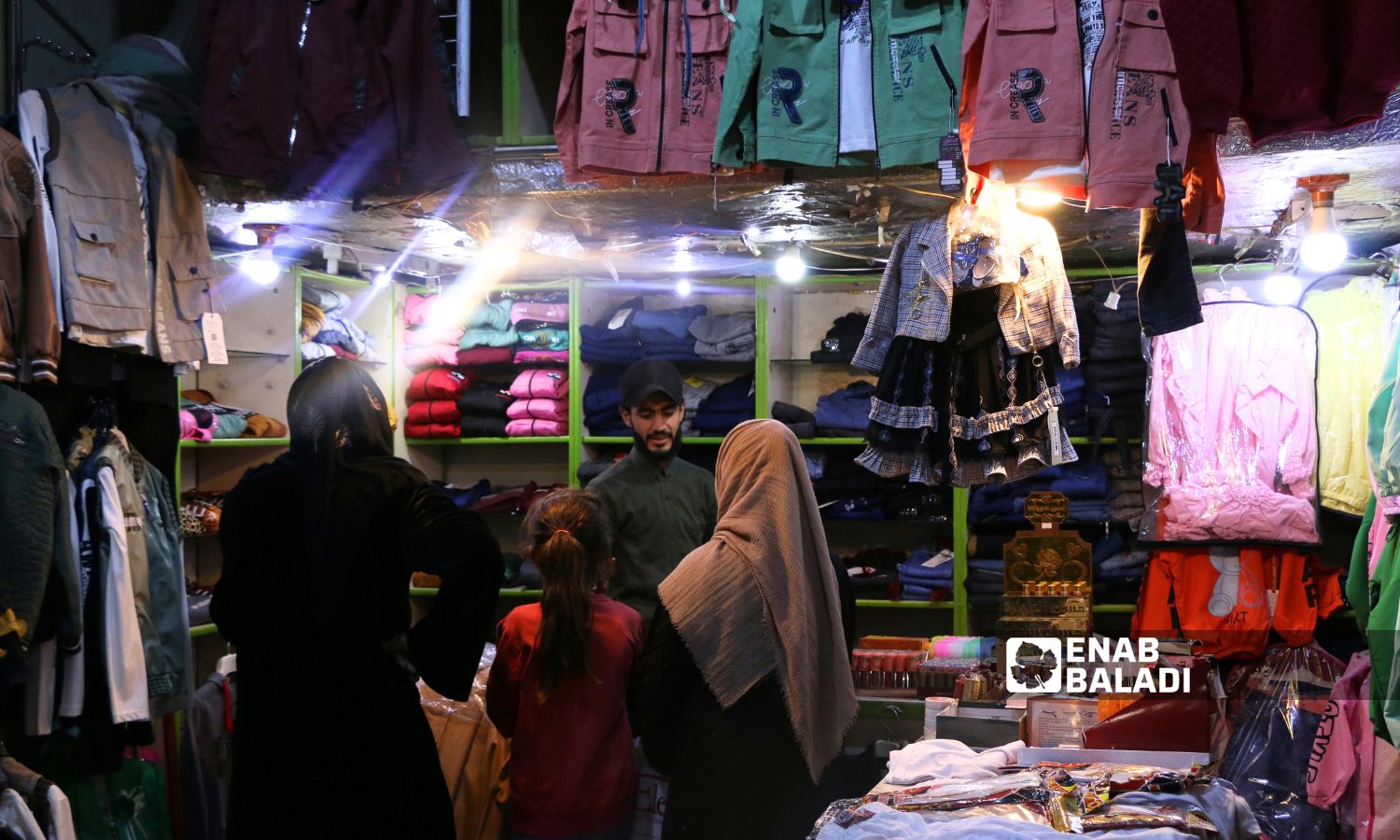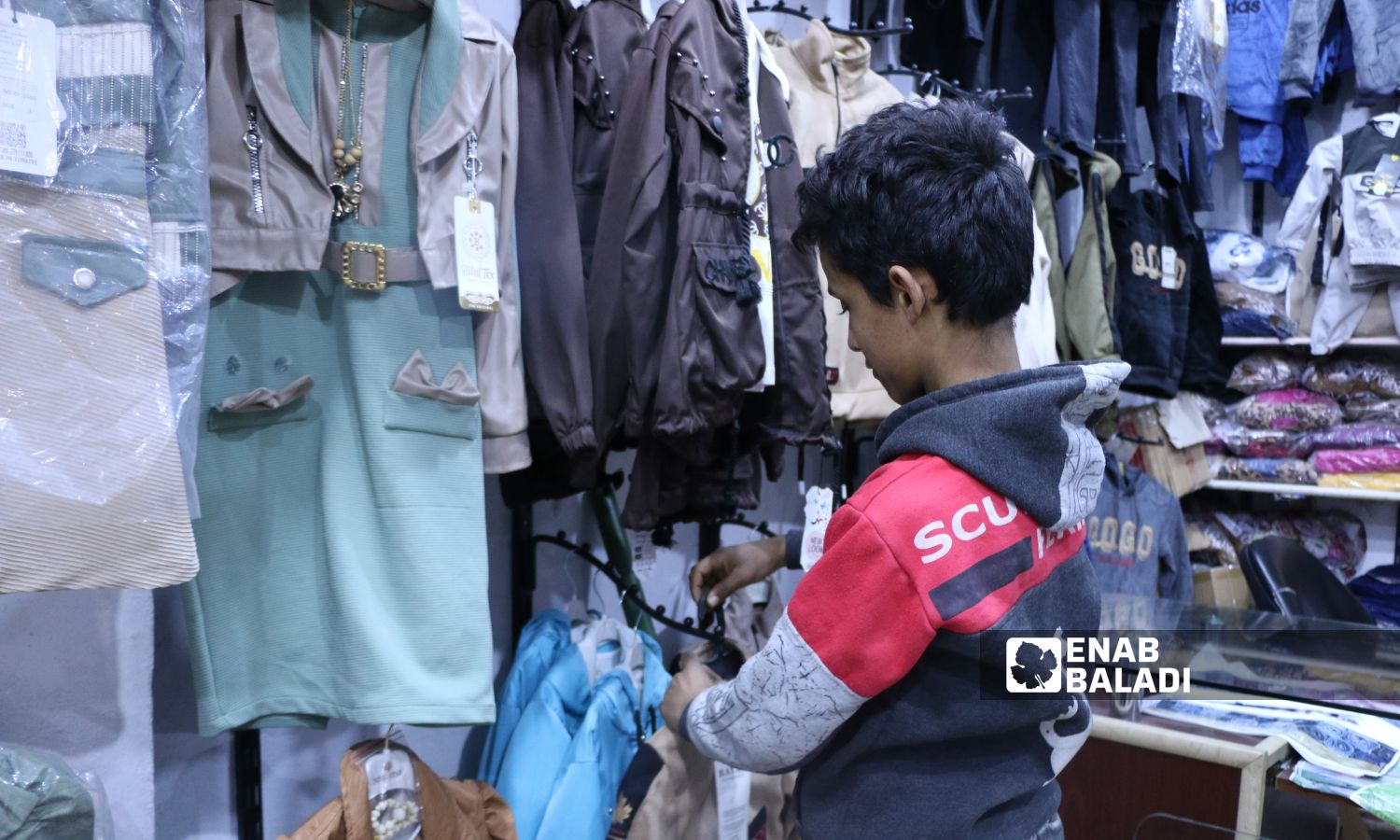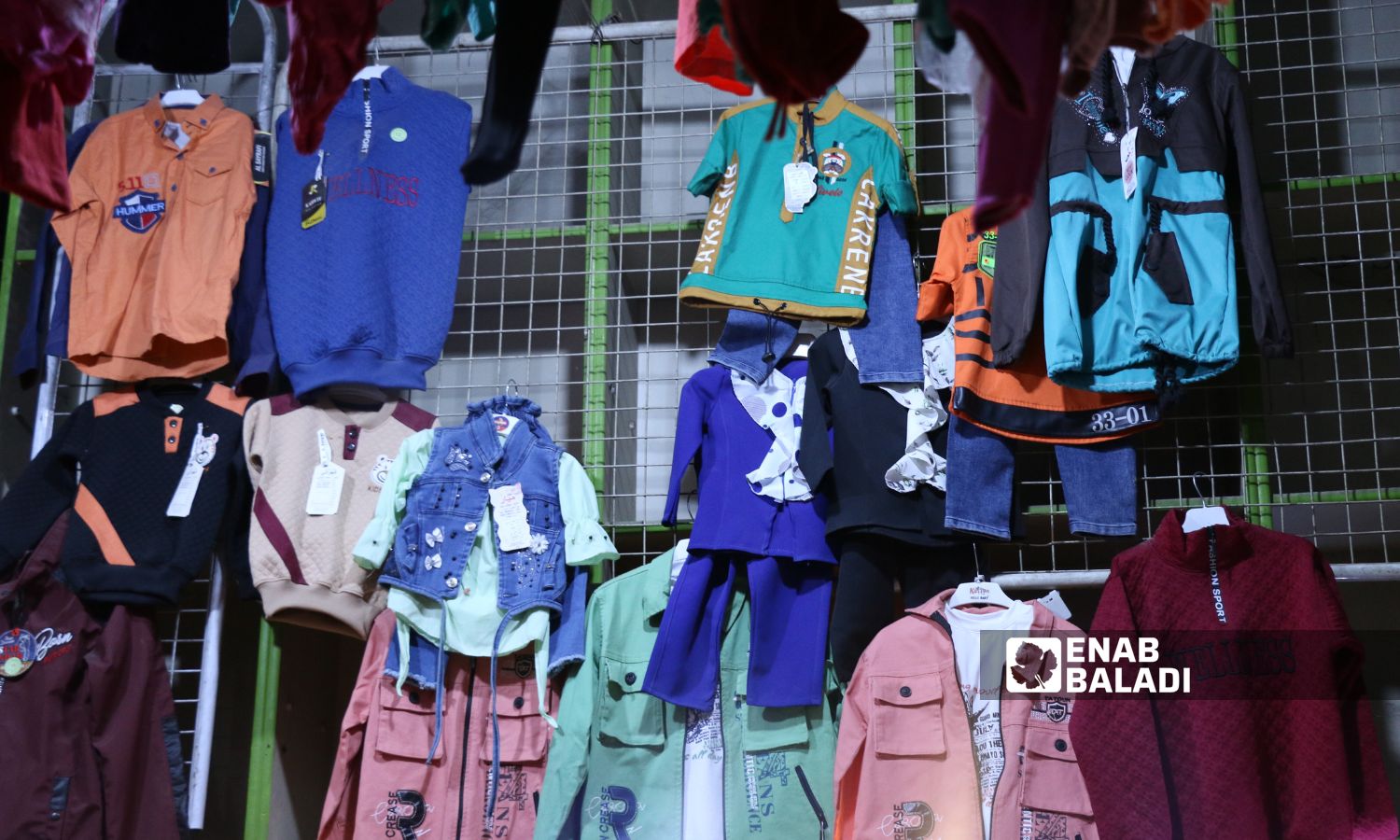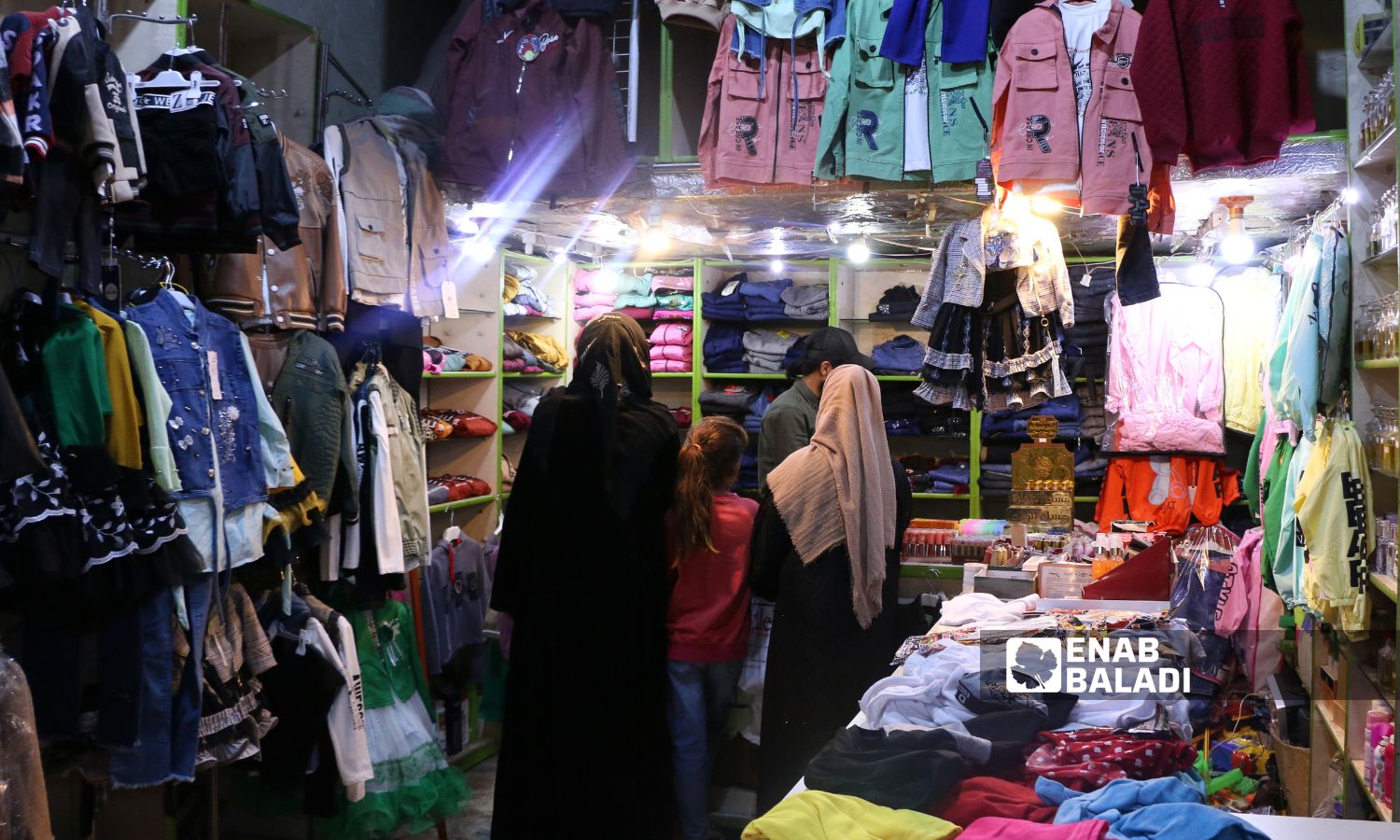



Clothing prices in the city of Ras al-Ain, northwest of al-Hasakah, have risen significantly, exceeding the purchasing power of the residents and the daily wages of workers, particularly with 28 days of Ramadan passing and Eid al-Fitr approaching.
According to a tour by Enab Baladi’s correspondent in the markets of Ras al-Ain, the price of regular quality pants is 170,000 Syrian pounds, and 250,000 Syrian pounds for high quality. Meanwhile, sweater prices start at 200,000 and can reach up to 500,000 Syrian pounds.
For children’s clothing, the lowest cost of an outfit is 600,000 Syrian pounds, while the prices of new shoes start from 150,000 and can go up to 600,000 Syrian pounds.
The city’s inhabitants, totaling 115,000 people, mainly rely on the agriculture sector, with daily wages ranging between 30,000 and 40,000 Syrian pounds (approximately two and a half US dollars), varying according to the number of working hours and the type of job, be it agricultural or construction.
Aziz Mahmoud, in his fifties from Ras al-Ain, is puzzled about securing Eid al-Fitr clothes for his four children. He told Enab Baladi that he works in an iron smelting factory and that his daily wage does not exceed 60,000 Syrian pounds (about 4.5 dollars), which is insufficient to meet his family’s basic needs.
He added that the minimum requirements for his children’s Eid outfit (clothes and shoes) requires at least three million Syrian pounds. He mentioned that he has a relative who owns a clothing store and has promised to sell him clothes on credit to be paid in installments if he cannot secure cash for immediate purchase.
Nihal al-Mustafa, a mother of five children from the village of Alouk east of Ras al-Ain, complained about her inability to purchase new clothes for her children. She explained that her sister in Germany takes care of her children’s Eid outfits each year by sending her an annual money transfer for this purpose.

Weak turnout for clothing purchases in Ras al-Ain before Eid al-Fitr due to the high prices – April 2, 2024 (Enab Baladi)
With new clothing prices soaring, residents have turned to second-hand clothes, which, despite being cheaper than new clothes, are still expensive.
Second-hand clothes are usually sold by piece (not as a set of pants and sweater as in shops), which allows sellers to set prices individually. Sometimes this means that some pieces may be more expensive compared to new clothes, because sellers consider them to be high-quality European products.
This year, Issa al-Ragheb decided to go to the used clothing market to buy clothes for his children before Eid. He told Enab Baladi that the prices are shocking, with some items amounting to the price of new clothing.
He mentioned that during his market tour, he found significant price variations between shops, sometimes reaching 100%.
He noted that after much struggle and searching, he found clothes sold in a store far from the market, with goods from the year 2023, and he was able to buy Eid outfits for his family of seven for 400,000 Syrian pounds per person.
According to Enab Baladi‘s monitoring of the used clothing market, clothing prices range from 85,000 Syrian pounds for regular quality pants to 150,000 Syrian pounds for high quality.
The prices for sweaters range between 100,000 and 200,000 Syrian pounds, and the cost for medium-quality children’s clothing ranges from 250,000 to 450,000 for high quality.

Weak turnout for clothing purchases in Ras al-Ain before Eid al-Fitr due to the high prices – April 2, 2024 (Enab Baladi)
Markets have experienced sluggishness in the movement of buying and selling clothes, with sales falling to less than half compared to previous years.
Fadi al-Hamza, owner of a clothing store in Ras al-Ain, described the pre-Eid sales movement as almost non-existent compared to 2023, stating that the deteriorating economic situation has made residents unable to afford new or even used clothes.
He added that the fluctuation of the Syrian pound against the dollar has contributed to market instability, causing financial losses for traders who sell in Syrian pounds.
He mentioned that this situation has forced many traders to raise clothing prices or suffer significant losses to avoid unsold stock. He pointed out that he also owns a used clothing store, and the situation there is similar to that of the new clothing store, with little demand for goods despite discounts reaching 70%.

Weak turnout for clothing purchases in Ras al-Ain before Eid al-Fitr due to the high prices – April 2, 2024 (Enab Baladi)
The Syrian pound is the currency in circulation in the region, but its unstable condition and unprecedented lows have burdened the people. The Turkish lira is the second currency (not widely circulated) due to the city’s proximity to the Turkish border, and the third is the US dollar.
Each US dollar is equivalent to 14,250 Syrian pounds, and the Turkish currency is 32.5 pounds, according to the S-P Today website specialized in tracking currency exchange rates.
if you think the article contain wrong information or you have additional details Send Correction